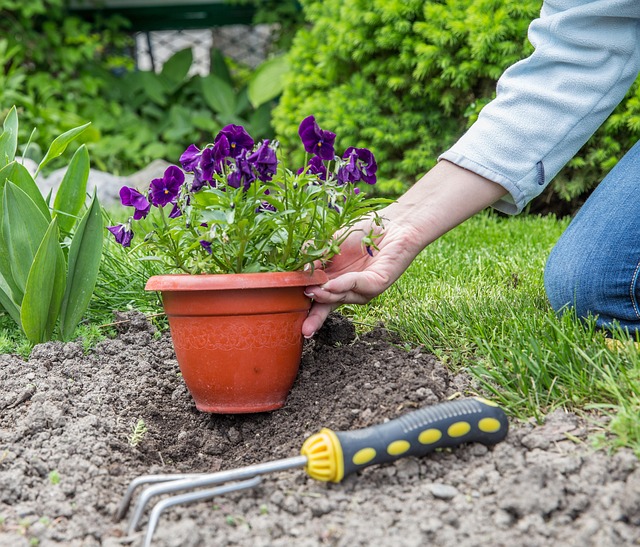Regular pruning and trimming are essential for maintaining all-season landscaping, promoting plant health, vibrancy, and aesthetic appeal throughout the year. A seasonal maintenance plan guides these practices, with specific tasks in spring, summer, autumn, and winter. Using appropriate tools and techniques, including sharp shears and pruners, ensures effective cuts that support healing and new growth. Avoiding over-pruning and incorrect timing disrupts plants' natural rhythms, potentially weakening them and impacting their ability to produce flowers or fruits. Proper care encourages air circulation, disease prevention, and overall landscape beauty.
“Unleash the full potential of your garden with a comprehensive guide to pruning and trimming schedules. In today’s digital era, proper plant care is not just an art but a vital component of all-season landscaping. This article delves into the significance of regular maintenance for healthy plants, offering a seasonal plan to keep your landscape thriving.
From understanding the fundamentals to avoiding common pitfalls, we equip you with essential tools and techniques. Discover how meticulous pruning and trimming can enhance your garden’s beauty and longevity, ensuring it remains a vibrant testament throughout every season.”
Understanding the Importance of Regular Pruning and Trimming
Regular pruning and trimming are essential practices for maintaining healthy plants, regardless of whether you’re an experienced gardener or just starting out with your green thumb. These routine tasks serve multiple purposes, contributing to the overall beauty and longevity of your garden. Pruning encourages new growth, allowing plants to produce more vibrant blooms and fuller foliage. It also helps to shape the plant, controlling its size and form, which is particularly important for all-season landscaping where plants need to look their best throughout the changing seasons.
Trimming plays a vital role in removing dead or diseased branches, preventing the spread of pests and infections. By keeping plants well-trimmed, you improve air circulation and sunlight penetration, both of which are crucial for optimal plant health. This practice is especially beneficial for all-season landscaping since well-maintained plants are better equipped to withstand harsh weather conditions and look visually appealing year-round.
Creating a Seasonal Maintenance Plan for All-Season Landscaping
Creating a seasonal maintenance plan is essential for maintaining all-season landscaping. By understanding the unique needs of plants throughout different times of the year, you can ensure they remain healthy and vibrant. In spring, focus on pruning to encourage new growth and remove any damaged or dead branches. Summer requires regular watering and weeding to prevent pest infestations and maintain a lush appearance. Autumn is ideal for trimming to shape the plants and prepare them for winter. Lastly, in winter, consider deep watering when necessary to protect roots from freezing temperatures. This holistic approach ensures your all-season landscaping stays in top form year-round.
Essential Tools and Techniques for Effective Plant Care
Pruning and trimming are essential components of all-season landscaping, ensuring your plants remain healthy, vibrant, and aesthetically pleasing throughout the year. To effectively care for your greenery, arm yourself with a few indispensable tools like sharp shears, loppers, and pruners suitable for various branch thicknesses. Start by identifying the plant’s natural growth pattern and seasonality to determine the best time for trimming—typically late winter or early spring for most shrubs and trees.
Proper technique is paramount; clean, sharp blades ensure precise cuts that promote healing. For smaller branches, use hand shears for meticulous control. Loppers are ideal for thicker branches up to about 1.5 inches in diameter. Larger branches may require a pair of pruners designed for heavier-duty tasks. Regular maintenance not only shapes the plant but also encourages new growth, improves air circulation, and prevents diseases, fostering a robust and visually appealing landscape.
Common Mistakes to Avoid During Pruning and Trimming Sessions
When it comes to pruning and trimming, homeowners often make mistakes that hinder the health and aesthetic appeal of their plants. One common error is over-pruning, which can stress the plant and lead to weak growth. It’s essential to remove only dead, diseased, or damaged branches, along with those crossing or rubbing against each other. Over-trimming can also result in excessive energy expenditure for your plants, making them more susceptible to environmental stresses.
Another mistake to avoid is pruning at the wrong time of year. Many plants have specific periods when they are most receptive to pruning, typically after they finish blooming or during their dormant season. Pruning during active growth can disrupt a plant’s natural rhythms and impact its ability to produce flowers or fruits. All-season landscaping requires an understanding of these cycles to ensure your plants remain healthy and vibrant throughout the year.
Regular pruning and trimming are essential components of any successful all-season landscaping strategy. By understanding the unique needs of different plants and implementing a well-planned maintenance schedule, you can promote healthy growth, enhance aesthetic appeal, and ensure your landscape stays vibrant throughout the year. Remember to equip yourself with the right tools and techniques, steer clear of common mistakes, and enjoy the benefits of a lush, well-maintained outdoor space.
